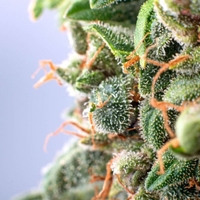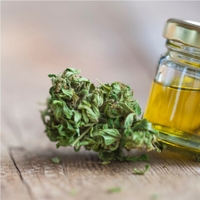
Regular physical exercise has known anti-inflammatory effects. New research published in Gut Microbes suggests that an interaction between the body’s gut microbiota and endocannabinoid system may partially mediate these effects (1).
Endocannabinoids are naturally occurring lipid signalling molecules produced on demand by the body. They bind to cannabinoid receptors present in the central, peripheral, and enteric nervous systems and the immune system (2). These receptors are also the main target of cannabinoids, the active components of cannabis. In addition to these endocannabinoids and their receptors, several enzymes facilitate their synthesis and degradation, and together they form the endocannabinoid system (ECS) (3).
The ECS plays a role in various biological processes, including energy metabolism, inflammation, and pain. The dysregulation of the ECS is associated with obesity and metabolic disorders, and digestive disorders, including inflammatory bowel disease (4,5,6).
Changes in gut microbiota diversity and composition (gut dysbiosis) and altered short-chain fatty acid (SCFA) production is also associated with these metabolic and digestive conditions and chronic inflammation. Furthermore, emerging research suggests that gut microbiota interacts with the ECS to modulate energy homeostasis, metabolism, inflammation, and gut barrier function (7,8,9). However, no study to date has investigated the relationship between changes in endocannabinoids and the gut microbiome in response to exercise.
In the present study, researchers compared data from two cohorts at baseline, a cross-sectional cohort comprising 78 individuals (age >45 years) with knee osteoarthritis and a validation cohort comprising 35 healthy individuals (age >18 years). The cross-sectional cohort then undertook a 6-week intervention and was randomised to either participate in treatment (15 minutes of muscle strength training 6 days/week) (n = 38) or control (n = 40).
In all groups, blood samples were collected for analysis of SCFAs, endocannabinoid levels, gene expression and inflammatory molecules. In addition, faecal samples were collected and analysed for bacterial composition and diversity using DNA sequencing.
Before the exercise intervention, endocannabinoid levels positively correlated with gut microbial diversity, SCFA levels and SCFA-producing bacteria, including Bifidobacteria and Coprococus 3. In contrast, endocannabinoid levels were negatively correlated with pathogenic bacteria such as Escherichia Shigella and Collinsella. Furthermore, endocannabinoid levels were positively associated with anti-inflammatory markers such as interleukin-10 (IL-10) but negatively associated with a range of pro-inflammatory cytokines, including TNF-α, IL-6 and IL-8.
Statistical analysis (mediation analysis ![]() ) demonstrated that endocannabinoids mediated approximately one-third of the downstream anti-inflammatory effects of SCFAs. These results suggest that while the endocannabinoids may partially mediate the anti-inflammatory effects of gut microbiota-derived SCFAs, other biological factors or pathways are involved.
) demonstrated that endocannabinoids mediated approximately one-third of the downstream anti-inflammatory effects of SCFAs. These results suggest that while the endocannabinoids may partially mediate the anti-inflammatory effects of gut microbiota-derived SCFAs, other biological factors or pathways are involved.
Endocannabinoid and SCFAs levels increased with the 6-week exercise intervention but remained constant in the control group. Concurrently, there was a decline in pro-inflammatory cytokines in the exercise group.
After 6 weeks, changes in the levels of the endocannabinoid anandamide correlated with the SCFA butyrate. Furthermore, a positive correlation was found between the changes in endocannabinoid levels and the increase in the abundance of SCFA-producing bacteria.
Conversely, changes in endocannabinoid levels were negatively correlated with the changes in the abundance of pro-inflammatory bacteria and cytokines.
The endocannabinoid levels were positively associated with the expression levels of the genes for the cannabinoid receptor CNR2 and the SCFA receptor FFAR2. The cannabinoid receptor CNR2 is related to anti-inflammatory effects, whereas FFAR2 regulates energy metabolism and is associated with a lower risk of obesity.
The results in this study suggest that the anti-inflammatory effects of SCFAs produced by gut bacteria after physical exercise could be mediated by the ECS. However, the results do not prove causality due to the observational study design. Furthermore, the study was undertaken in a cohort of individuals with osteoarthritis, and results may not be transferable to other populations. Nevertheless, understanding the relationship between the gut microbiota and ECS, and specifically which bacterial strains have the greatest effect, could prove beneficial for the treatment of inflammatory diseases.






